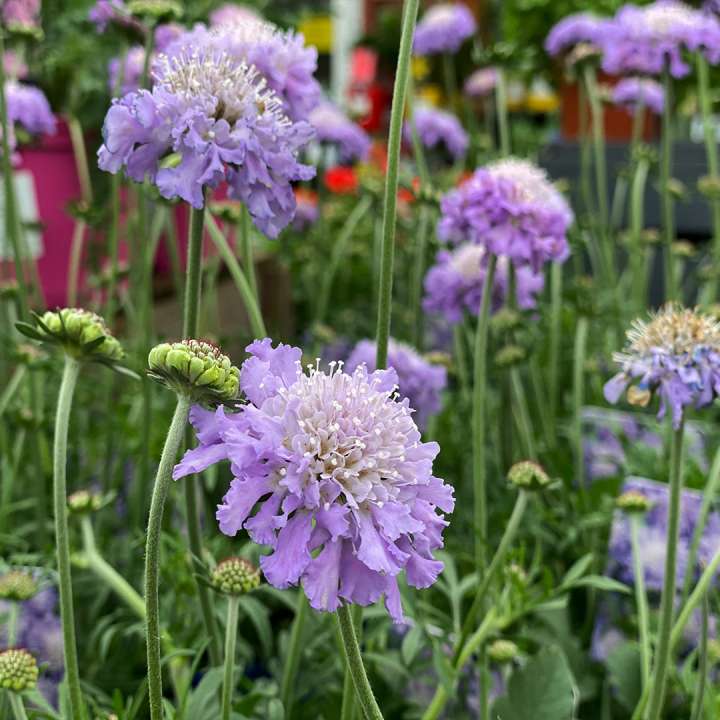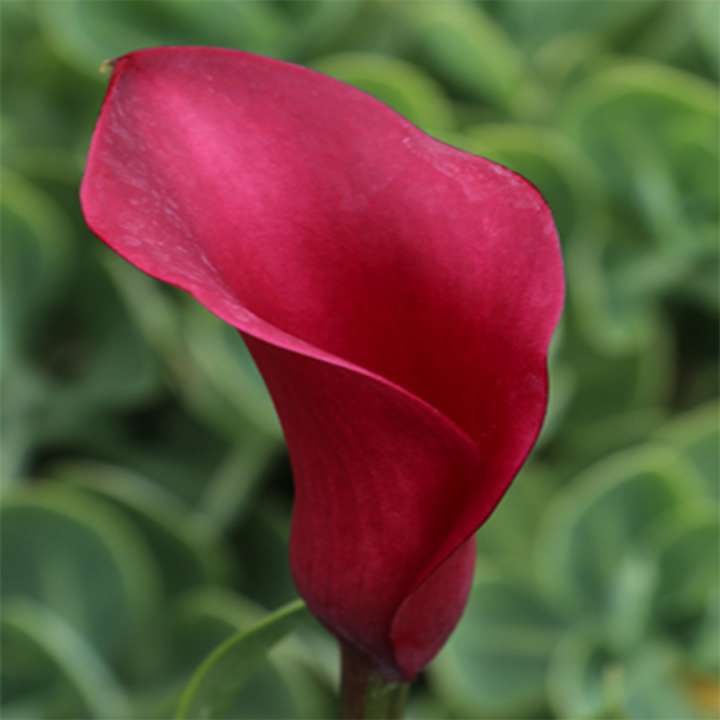What is a cottage garden?

A cottage garden conjures up the idyllic image of a traditional flower garden; a peaceful oasis where you can relax whilst butterflies, bees and other pollinators flutter around. Cottage gardens tend to be predominantly a combination of herbaceous perennials and are often interspersed with showy annuals, flowering bulbs and even herbs.
Herbaceous perennials are plants that die back in winter reappearing bigger and better again each year, and include well-known favourites such as Lupins, Delphiniums and Hollyhocks.
In this article we offer some suggestions for plants that'll offer interest, colour and fragrance in your garden from spring right through to autumn.
Read on or click here to shop our plants & trees

Early spring
We all look forward to seeing the spring colour so why not introduce early interest in your cottage garden by underplanting with bulbs in autumn? Early flowering Anemones and Ranunculus are very attractive, and by choosing your varieties carefully, you can have Narcissus and Tulips that'll flower consecutively through the first few months of the year.
One of our favourite early-flowering herbaceous plants is the Scabious because it flowers repeatedly from about April right through summer. Like other perennials, they 'hibernate' over winter until it's warm enough to emerge again next spring.
You might also consider Convallaria (Lily of the Valley) for the front of the border. It's a very pretty, low-growing, early-flowering ground-cover plant but BEWARE - it can be toxic if eaten.
Aquilegia - sometimes known as Columbine or Granny's Bonnet - is also worth a mention because it flowers so early in the season. There are many varieties ranging in height from miniature types suitable for rockeries up to 60cm (2ft) tall border varieties. It often self-seeds, throwing up new plants next year which - depending on your outlook - may (or may not!) be an advantage.
Spring preparations for summer
Summer is when a cottage garden really comes into its own, but it often requires some planning and preparation in springtime.
Summer-flowering bulbs (within which we include tubers, corms etc) can be planted now. You may be choosing new ones or you've lifted last year's, but either way you'll see them start to bud away in March or April. If you feel that the ground is still too cold to put them into the garden, start them off in a pot indoors and plant them out in a few weeks.
Dahlias and Gladioli are amongst the most popular summer-flowering bulbs but don't overlook the less well-known varieties such as the Calla Lily (pictured here) which can make a wonderful statement in the border.
Annual plants grown from seed is a very cost effective way to add lots of colour to your cottage garden and these can be sown in March and April. If you feel that the ground is too cold to sow directly into the border (and it usually is in Scotland!) start them in seed trays or little containers until the weather is suitable for transplanting them into the outdoor space. Amongst our favourite seed-grown cottage plants are Cosmos, Calendula (Scotch Marigold), Sunflower, Nicotiana and Amaranthus. If you can't decide, you could always choose one of the popular seed mixes designed for cottage gardens which gives you a good selection to try and lets you see which varieties work best in your garden.
Herbaceous starter plants are generally available in early spring too and means that you can get a good selection of different varieties for your budget. These are small plants at the moment but check the eventual size and how long it'll take to reach that size when you're planning your layout. If you want your garden to fill in very quickly, you might consider planting 3 plants together to get a sizeable clump.
When you're choosing your collection, try to select plants that'll bring interest in different months of the year so you've always got something new to enjoy.
Late spring to early summer
In late spring we begin to see some our traditional favourites coming into flower, including Lupins, Delphiniums, Hollyhocks and Verbascum.
For the taller plants in your cottage garden, you might put some support in place either using bamboo canes & twine or some of the bespoke plant support systems. The support systems have the advantage of supporting the plant in a very natural way with the supporting frame often not being visible amongst the foliage. To minimise damage to your plants, put the supports in place early and allow the plants to grow through them - trying to place them after the plants have grown almost always results in damaging the blooms and foliage.
Some of the annuals that you sowed earlier this year will now be growing strongly before coming into flower in summer. If you didn't quite get around to growing your annuals from seed, you can buy them as young plants in the garden centre. As always, buy the best quality you can because it's the most reliable way to achieve good results.
Customers sometimes ask us why some outlets sell young plants cheaper than garden centres, and it's simply related to the quality of the products used and the growing conditions. Cheaper seed and more cramped conditions produce less expensive plants, primarily for non-horticultural outlets. By comparison, garden centres will stock plants grown from quality seed, in well-designed growing conditions and with sufficient space to develop good root growth.
Don't forget that regularly dead-heading (or cutting the blooms for cut flowers) encourages repeated flowering.


